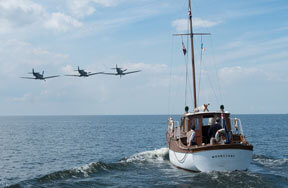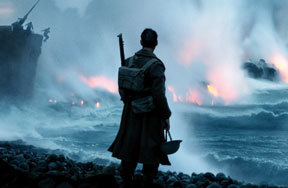World War II was the most devastating war in history because it included the most countries and killed the most people. It began in 1939 as a European conflict, but quickly escalated into a global fight until it ended in 1945. Find out more about World War II here.
The World After WWI
With the end of World War I came peace - and bitter resentment. The Treaty of Versailles (the peace treaty that officially ended WWI) required Germany to take full responsibility for causing the war, and stripped them of their land and military forces. Out of this anger and dissatisfaction rose a man named Adolf Hitler, the Fuhrer ("leader") of the National Socialist (Nazi) party, who promised to overturn the treaty, restore order to their nation and preached that Germans were a superior race. In 1937, Germany signed the Berlin-Rome-Tokyo Axis Powers with Italy and Japan, which was an agreement to help each other during wars. Two years later, on September 1, 1939, the Second World War began when Nazi Germany invaded Poland.
 German troops march through occupied Warsaw, Poland
German troops march through occupied Warsaw, Poland
World War II - Axis Powers vs. Allied Powers
After the Axis Powers declared war, the Americans didn't want to get involved, but they joined the Allies (which consisted of the British Empire, the Soviet Union, France and China) after Japan attacked the US navy base at Pearl Harbor in Hawaii on December 7, 1941.
World War II - Atrocities of the War
- The Holocaust - The Holocaust was the persecution and genocide (an attempt to kill every person in certain groups) of various ethnic, religious and political groups by Nazi Germany. The Jews of Europe were the main victims of the Holocaust. Around six million Jews died, as well as about five million other "undesirable" people including Communists, Poles, Soviet prisoners of war, gay people, and gypsies.
- The Atomic Bomb - In an effort to force the Japanese to surrender, the US dropped two atomic bombs on the cities of Hiroshima on August 6, 1945 and Nagasaki on August 9, 1945. At least 120,000 were killed immediately. These were the first and only nuclear attacks in history.

World War II - The Aftermath
WWII ended on August 15, 1945 after the total surrender of Japan. At least 50 million people lost their lives - about 20 million soldiers and 30 million civilians. In order to prevent another devastating war from occurring again, the United Nations was founded to prevent conflicts between countries. Also, Germany was divided into East and West Germany, Austria was separated from Germany and Korea was divided in half along the 38th parallel. However, when WWII ended, the Cold War began between the US and the Soviet Union. It was called the Cold War because it didn't lead to armed conflict between the superpowers, but was marked by political tension and weaponry stockpiling.

Have Your Say
Have you studied WWII in school? What interesting facts do you know about the war? Leave a comment and let us know.
Related Stories

































